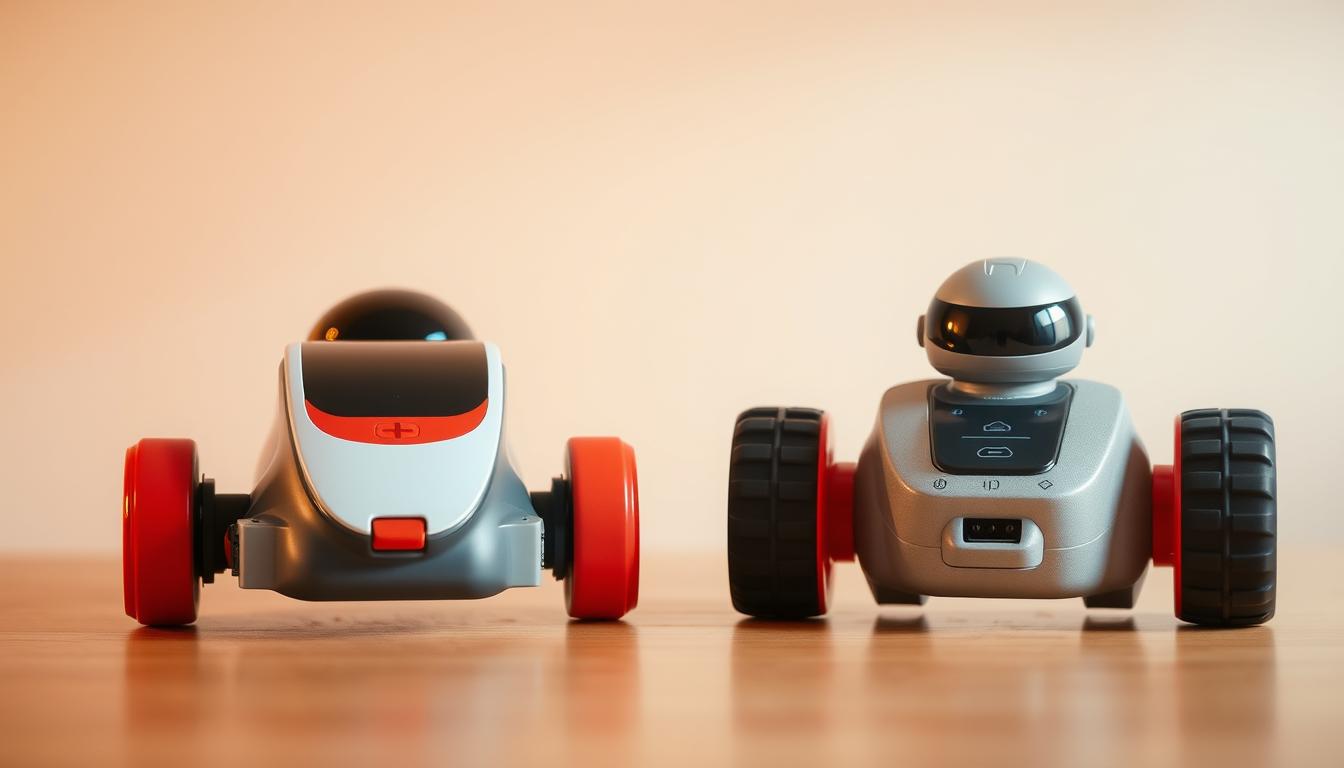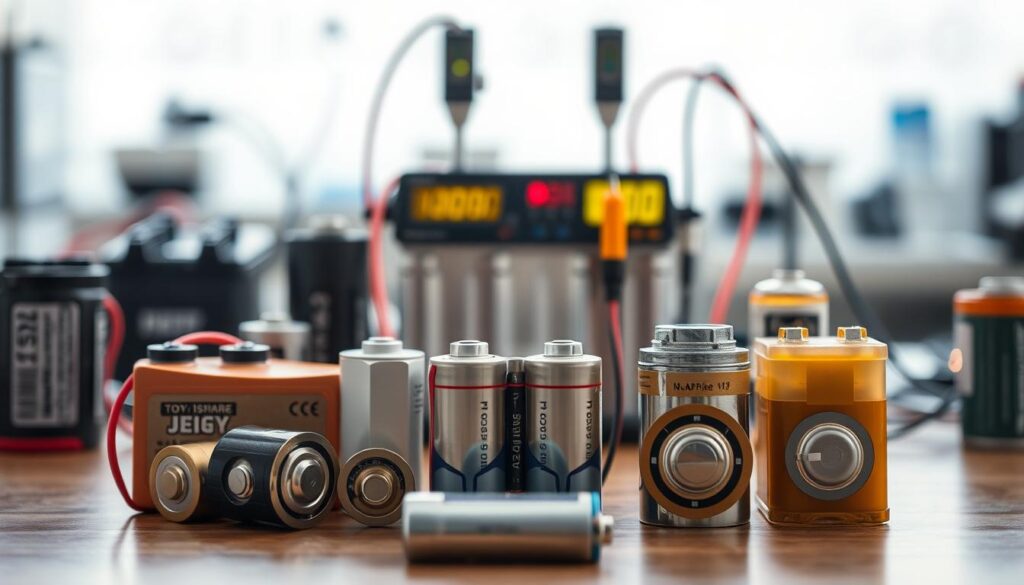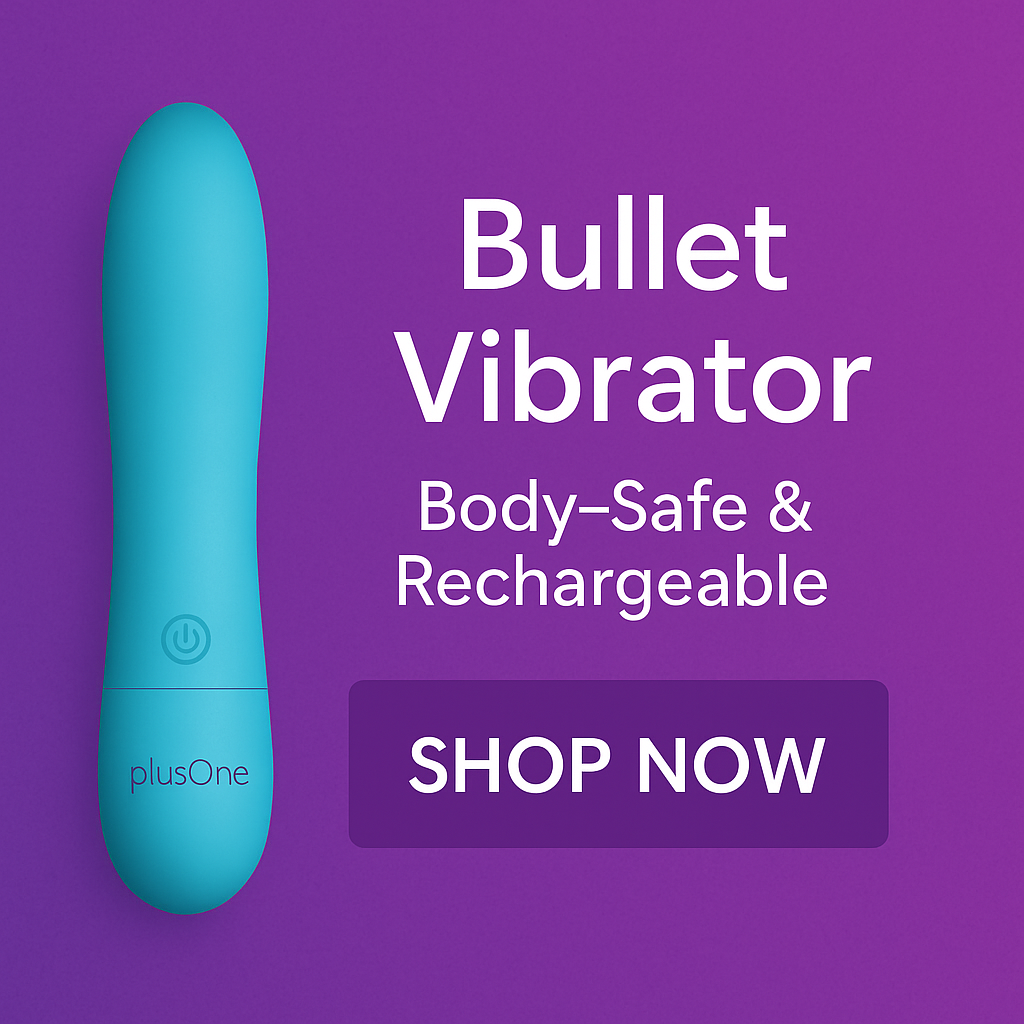
Picking playthings for kids involves more than just fun colors or cool features. One critical choice parents face is deciding between items that run on disposable energy cells or those with built-in charging capabilities. This decision affects everything from daily convenience to long-term expenses.
Disposable power sources offer instant availability but require frequent replacements. On the other hand, products with integrated charging systems save trips to the store. Both options have unique benefits and trade-offs that impact performance, reliability, and even environmental footprint.
For families, understanding these differences early helps avoid frustration. A toy that dies mid-play could disappoint a child, while constantly buying new cells adds up over time. Factors like upfront costs, maintenance effort, and sustainability all play roles in finding the best fit.
Key Takeaways
- Power source decisions affect playtime consistency and long-term expenses
- Disposable options provide convenience but create recurring costs
- Reusable systems reduce waste but may need initial investment
- Environmental impact varies significantly between the two types
- Child’s usage patterns help determine the most practical choice
Understanding Battery Basics for Toys
Powering playtime requires more than just pressing an on button. The energy supply inside gadgets determines how long they’ll run and how well they perform. Let’s break down what every parent should know about these tiny powerhouses.
Battery Varieties and Their Roles
Most playthings rely on two main types: disposable and reusable. Common disposable options include alkaline cells (like AA or AAA sizes) that work in low-drain devices such as stuffed animals or basic remotes. Reusable alternatives often power higher-energy items like ride-on cars, lasting longer between charges.
| Type | Common Uses | Voltage | Lifespan |
|---|---|---|---|
| Alkaline (AAA) | Flashlights, simple remotes | 1.5V | 10-20 hours |
| Rechargeable | Motorized vehicles, drones | 1.2V-3.7V | 300+ cycles |
How Batteries Impact Toy Performance
Capacity – measured in milliampere-hours (mAh) – decides how long a device operates. A 1000mAh AAA alkaline might last two days in a talking doll, while a 2000mAh reusable cell could extend playtime to five days. Pro tip: Check manuals for voltage needs to prevent damage.
“Always match the battery type to the toy’s requirements – mismatched voltage can cause overheating in sensitive electronics.”
Safety first! Products meant for younger kids often use screw-secured compartments to prevent accidental swallowing. Lithium-based options work best in extreme temperatures but require adult supervision during charging.
Rechargeable vs. Battery-Operated Toys for Beginners
When powering children’s play devices, energy choices shape both fun and functionality. Parents often weigh immediate convenience against long-term value, especially when selecting between reusable and single-use options. Each approach affects how often items need attention and their overall performance.
Reusable Energy Cells: Strengths and Limitations
Reusable systems excel in high-drain gadgets like remote-controlled cars. They handle frequent use better than disposables, with some models lasting 500+ charges. However, initial costs are higher – a quality set with a charger might cost $30 upfront.
Charging time matters too. Some cells need 4-8 hours to reach full capacity, which could interrupt play. Families with multiple devices may need several backup sets to avoid downtime.
When Single-Use Cells Shine
Disposable options work best for low-usage items. A musical book played twice weekly might drain cells slowly, making replacements rare. They’re also handy during travel – no need to pack charging gear.
New lithium disposables last 40% longer than standard alkaline in extreme temperatures. This makes them ideal for outdoor playthings used in summer heat or winter cold.
Matching Power Sources to Lifestyle
Consider how often a toy gets used. Daily favorites justify reusable systems, while occasional ones suit disposables. Households with solar panels might prefer eco-friendly charging setups.
“We switched to rechargeables for our toddler’s ride-on truck – saved $60 on cells in six months.”
Check voltage compatibility first. A 1.5V device might underperform with 1.2V reusable cells. Always store spares in labeled containers to prevent mix-ups.
Evaluating Performance, Safety, and Cost Factors

Selecting the right energy source for play devices goes beyond immediate convenience. Three critical elements determine long-term satisfaction: how well they work, protective measures, and overall value. Let’s explore what makes each option stand out in real-world scenarios.
Performance and Energy Capacity Comparison
High-drain gadgets like racing drones reveal stark differences between battery types. Alkaline cells often struggle under continuous use, dropping voltage after 30 minutes. Lithium options maintain steady power output for 2+ hours in similar conditions.
| Type | Capacity | High-Drain Performance | Extreme Temp Use | Cost Per Year* |
|---|---|---|---|---|
| Alkaline | 800-1200mAh | 25-40 mins | -18°C to 50°C | $18 |
| Lithium | 2000-3500mAh | 90-150 mins | -40°C to 60°C | $32 |
*Based on daily 1-hour use in motorized products. Lithium’s higher upfront cost balances out over 3+ years of use.
Safety Considerations and Usage Guidelines
Proper handling prevents most issues. Always store cells in cool, dry places and check for safety standards for toys with button. Lithium batteries require extra care:
- Use manufacturer-approved chargers
- Avoid mixing old and new cells
- Inspect for swelling monthly
Alkaline options pose lower risks but can leak corrosive fluid if left in unused devices. A 2023 Consumer Reports study found 78% of battery-related incidents involved improper storage. Simple habits like removing cells during long breaks extend product life and safety.
Environmental Impact and Long-Term Benefits

Making eco-conscious choices for kids’ gadgets benefits both families and the planet. Traditional disposable cells create 8,000 tons of landfill waste annually in the U.S., while reusable alternatives cut this number dramatically. Parents seeking sustainable options will find multiple advantages beyond just reducing trash.
Sustainability and Cost Savings Over Time
Alkaline units might seem cheaper upfront, but their true environmental cost adds up. A single reusable set replaces 100+ disposables over its lifespan. For busy households, this means fewer store runs and less plastic packaging in recycling bins.
| Type | CO2 Emissions (per year)* | Material Waste | 5-Year Cost |
|---|---|---|---|
| Disposable | 12kg | 48 units | $144 |
| Reusable | 2kg | 4 units | $52 |
*Based on powering 2 medium-drain devices daily
Modern options made with recycled materials perform just as well as new ones. Brands now offer solar chargers that work with sustainable living solutions, perfect for outdoor play sets. These innovations help families shrink their carbon footprint without sacrificing fun.
Three simple steps make a difference:
- Choose high-capacity cells for frequently used items
- Recycle old units at designated drop-off points
- Opt for ENERGY STAR-certified chargers
By matching power sources to actual needs, parents create healthier habits for their children. Small changes today can lead to cleaner parks and safer playgrounds tomorrow.
Conclusion
Choosing how to power children’s playthings balances practicality with responsibility. High-use devices like ride-on cars thrive with reusable energy cells, while occasional-use items often work better with single-use options. Performance hinges on capacity and proper voltage matching – critical factors for safety and longevity.
Families should weigh upfront costs against five-year savings. Reusable batteries cut waste by 90% compared to disposables, according to EPA data. However, households without reliable charging access might prefer traditional types for certain toys.
The best choice depends on three factors: how often children play with the device, home power setups, and environmental priorities. Busy parents might mix both solutions – rechargeables for daily favorites, disposables for travel items.
Ultimately, there’s no universal answer. By matching battery choices to actual needs, families optimize playtime while reducing their ecological footprint. Whether prioritizing convenience or sustainability, informed decisions create better experiences for kids and parents alike.

